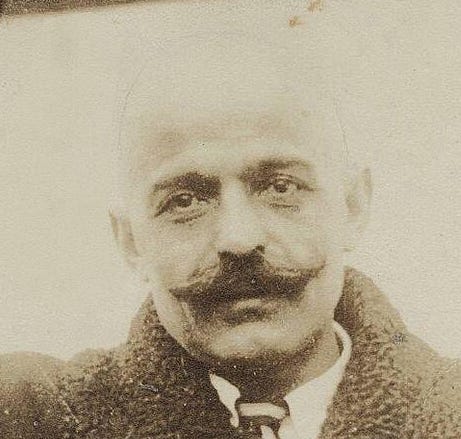When Communities are in Shadow
Sometimes things feel off—even in communities of two.
This is the third entry in a (casual) series I’m doing about power, power-in-shadow, and dark energy or entities. I’m still feeling my way through this material and have no answers, but I’m very curious about the denser worlds, to loosely quote the great Armenian mystic G.I. Gurdjieff. (You can read about Gurdjieff’s worlds, a spin on “The Great Chain of Being,” where we pass energy up and down, via Episcopalian priest and mystic Cynthia Bourgeault here—Cynthia’s episode is coming up on the podcast soon.) In a nutshell, Gurdjieff posits that we are World 48 (World 24 at our finest; World 96 at our worst). Here’s Bourgeault in Eye of the Heart: “World 96 is the ‘formatory’ world, as Gurdjieff calls it, where everything operates on autopilot, in clichés and thought-bites: stale, conditioned, habitual. There’s not even any real thinking that goes on here, as there is in World 48; it’s all recycled opinions and stereotypes. In Gurdjieffian terms, this is the world of personality, the world of ‘not-I’; of all that is artificially acquired and that obscures our real essence. It is monochrome, repetitive, and boring—uncreative, stony, and inanimate; the lowest world in which human consciousness can even barely hold its shape.” This is not the lowest world, by a long-shot, but the way Gurdjieff articulates these break-points in consciousness does give shape to how we hold ourselves: Those moments when we feel aligned with our highest selves (World 48 to World 24), and then those times when our own behavior feels…ick. You know, when you leave the table and want to take a shower. (And when it feels that way, you should.)

This is a longer post: I want to take you through some more of Llewellyn Vaughan-Lee’s writings about the misuse of power and when it bends toward shadow and darkness, and then I’m also going to talk through Yeshua-via-Carissa’s list of the seven ways to identify when (and how) a community is in shadow (a community might have only two members). (You can also listen to Carissa talk through this list of seven in our most recent podcast episode.)
In The Alchemy of Light: Working With the Primal Energies of Life, Llewellyn Vaughan-Lee talks about the avenues for connecting with the inner world, the mundus imaginalis, where alchemical energy and power lives—typically, we’ve accessed these energies, both light and dark, through the use of symbols and images. And per Jung, these “riverbeds of life,” are strictly amoral, meaning that they must be accessed with hands and minds that know what they are doing—who intend to bend the power toward the light. Well, it doesn’t always happen that way. As LVL writes, “Traditionally this has been the work of the shaman or magus, one who has been trained in the power of the symbolic inner world and knows how to work with its images for the benefit of others. Of course this work has always had the potential to be misused, to fall into the hands of those who manipulate the images of the inner world for their own personal gain, to enhance their own personal power. In recent years many of these previously secret techniques have become more widely known, and the danger of misuse has grown accordingly. … People who are drawn by discontent or greed into using these ancient techniques rarely recognize that they are using dark magic, that they are bartering their soul for personal gain. Our infatuation with our individual self, our contemporary creed that we have the right to what we want, and our childish reluctance to acknowledge real responsibility for our actions in the outer or inner world have a darker side than we dare to acknowledge. Real shamanic work, like alchemy, is always done for the sake of the whole.” (p. 59)
Keep reading with a 7-day free trial
Subscribe to Pulling the Thread to keep reading this post and get 7 days of free access to the full post archives.



